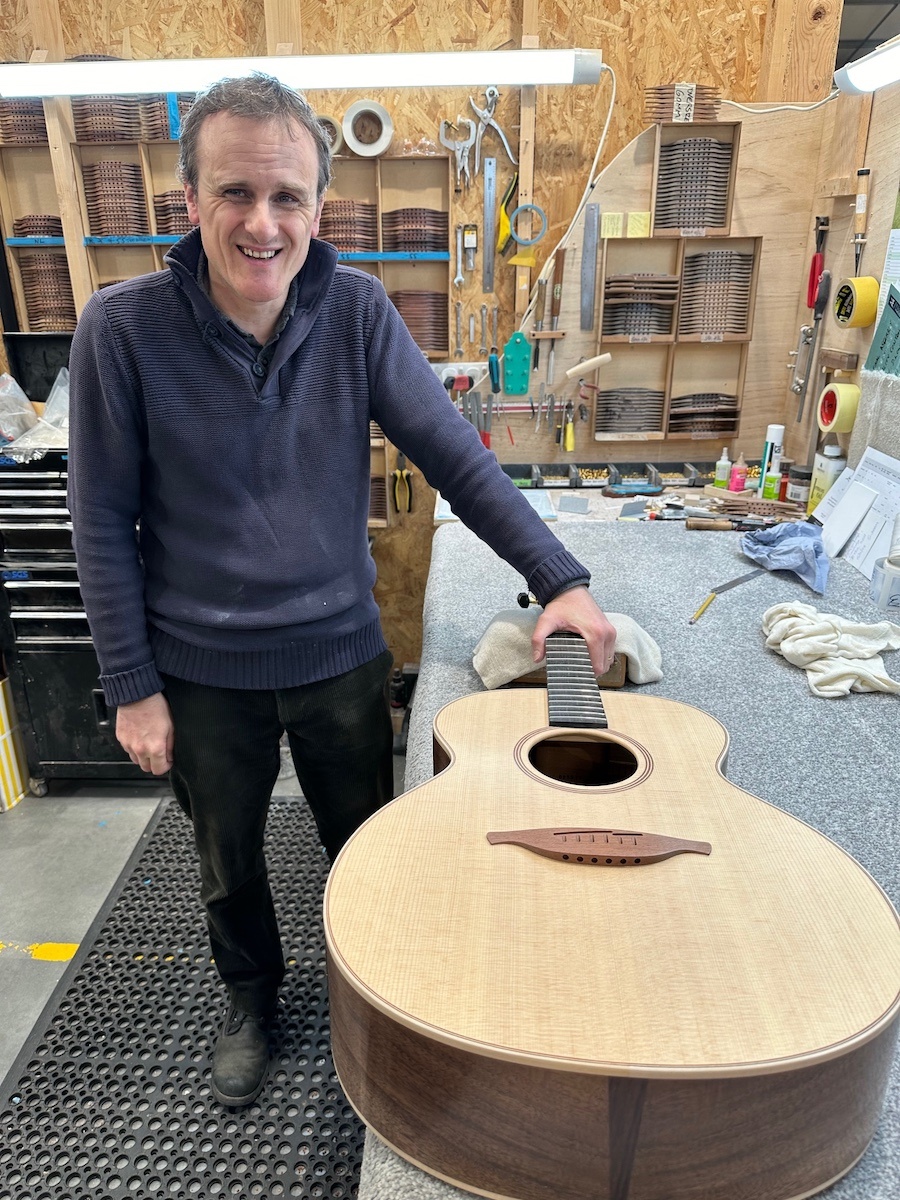> Your partnership with Ed Sheeran has certainly garnered attention, especially with the Sheeran by Lowden models. Could you share how this collaboration came about and your vision for its future development in terms of guitar production?
Absolutely. The journey with Ed Sheeran began roughly seven years ago when Gary Lightbody of Snow Patrol suggested I create a guitar for Ed as a gift. I headed up to the North Coast, where I designed a new compact guitar tailored to Ed's style. Subsequently, Ed visited our factory, purchased several guitars, and our friendship blossomed from there. During one of our encounters in Texas, I expressed my desire to create affordable guitars for young enthusiasts. Ed, ever supportive, offered to invest if I ever pursued the idea.
A couple of years later, Ed reached out, reigniting our conversation about affordable guitars. Thus, the project was born. We aimed to produce guitars reminiscent of Lowden quality but manufactured locally to ensure control over production. However, the challenge lay in balancing quality with affordability, given our higher manufacturing costs. Through collaboration, we introduced new models priced around £850 to £1000, which are becoming popular models.
While our initial goal was to offer guitars at a lower price point, we realized the limitations and adjusted our strategy. Recently, we introduced the W05, a higher-spec model priced at around £1200. Inspired by the success of our limited edition Autumn's Variation guitar, which featured a sinker redwood top, the W05 boasts reclaimed redwood and additional features, reflecting our commitment to innovation and quality.
Looking ahead, we aim to further refine our offerings while maintaining reasonable pricing. The partnership with Ed Sheeran continues to inspire us to push boundaries and make quality instruments accessible to aspiring musicians.
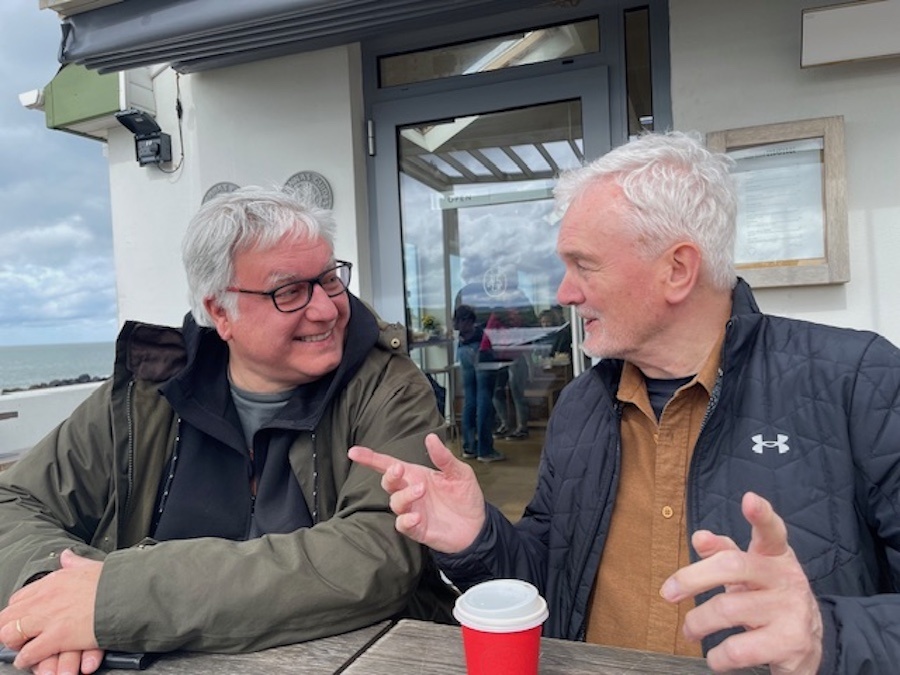
> The Lowden operation in Saintfield, 20 miles south of Belfast, comprises around 50 artisans crafting guitars. Could you give us an insight into your yearly production rate and the typical timeframe for crafting one guitar? Additionally, how do you manage production schedules to meet the demands of your dealers?
Sure thing. So, on average, we craft about 1,200 Lowden guitars annually, excluding those for the Sheeran line which account for 2,5 to 3'000 guitars per year. Regarding production time, it generally takes us around 6 to 8 weeks to complete a guitar from start to finish. Our workflow involves small teams; for instance, our master series guitars are handled by a group of 4 to 5 craftsmen throughout the entire process. However, for other series like the 50, 35, and original series, we divide tasks among different individuals, with each focusing on specific stages of production. We also rotate our artisans to learn new skills and adapt to fluctuating demands. This flexibility allows us to adjust production accordingly, especially when we receive a surge in orders for a particular model.
As for the electric guitar project, it's been an intriguing journey. It all started when Ed Sheeran approached me to create a guitar as a gift for Gary Lightbody from Snow Patrol. Interestingly, this time around, it was an electric guitar that was requested. After some deliberation, I ventured to Portugal to design the inaugural electric model, which we dubbed the GL10. Ed's enthusiasm for the guitar was contagious, leading him to request additional units for himself, Eric Clapton, and John Mayer. However, like many ventures, we encountered a pause during the pandemic. Nevertheless, we've reignited the project and are moving forward once again.
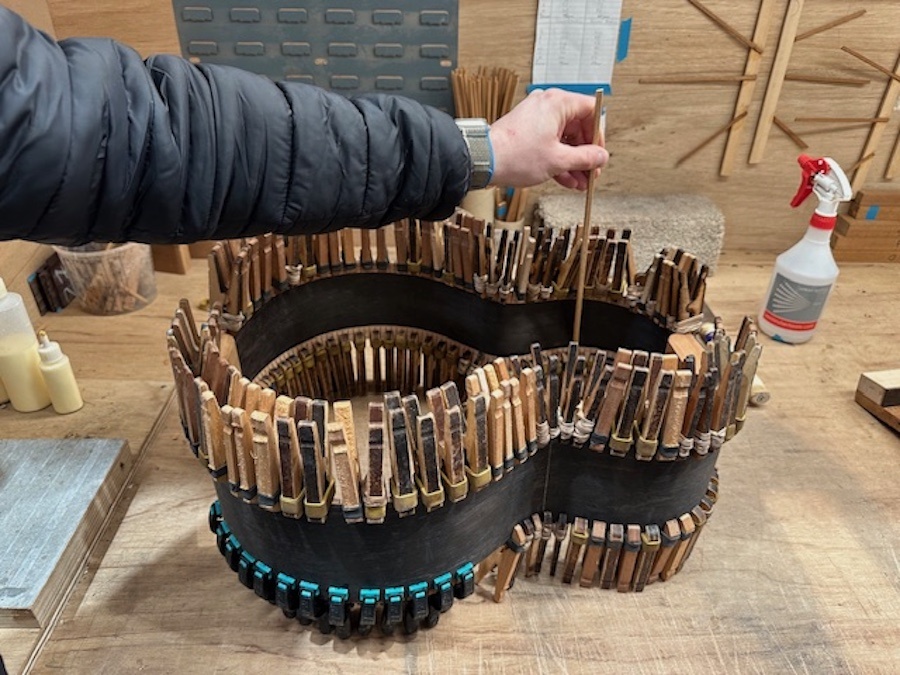
> The Lowden operation in Saintfield, 20 miles south of Belfast, comprises around 50 artisans crafting guitars. Could you give us an insight into your yearly production rate and the typical timeframe for crafting one guitar? Additionally, how do you manage production schedules to meet the demands of your dealers?
Sure thing. So, on average, we craft about 1,200 Lowden guitars annually, excluding those for the Sheeran line which account for 2,5 to 3'000 guitars per year. Regarding production time, it generally takes us around 6 to 8 weeks to complete a guitar from start to finish. Our workflow involves small teams; for instance, our master series guitars are handled by a group of 4 to 5 craftsmen throughout the entire process. However, for other series like the 50, 35, and original series, we divide tasks among different individuals, with each focusing on specific stages of production. We also rotate our artisans to learn new skills and adapt to fluctuating demands. This flexibility allows us to adjust production accordingly, especially when we receive a surge in orders for a particular model.
As for the electric guitar project, it's been an intriguing journey. It all started when Ed Sheeran approached me to create a guitar as a gift for Gary Lightbody from Snow Patrol. Interestingly, this time around, it was an electric guitar that was requested. After some deliberation, I ventured to Portugal to design the inaugural electric model, which we dubbed the GL10. Ed's enthusiasm for the guitar was contagious, leading him to request additional units for himself, Eric Clapton, and John Mayer. However, like many ventures, we encountered a pause during the pandemic. Nevertheless, we've reignited the project and are moving forward once again.
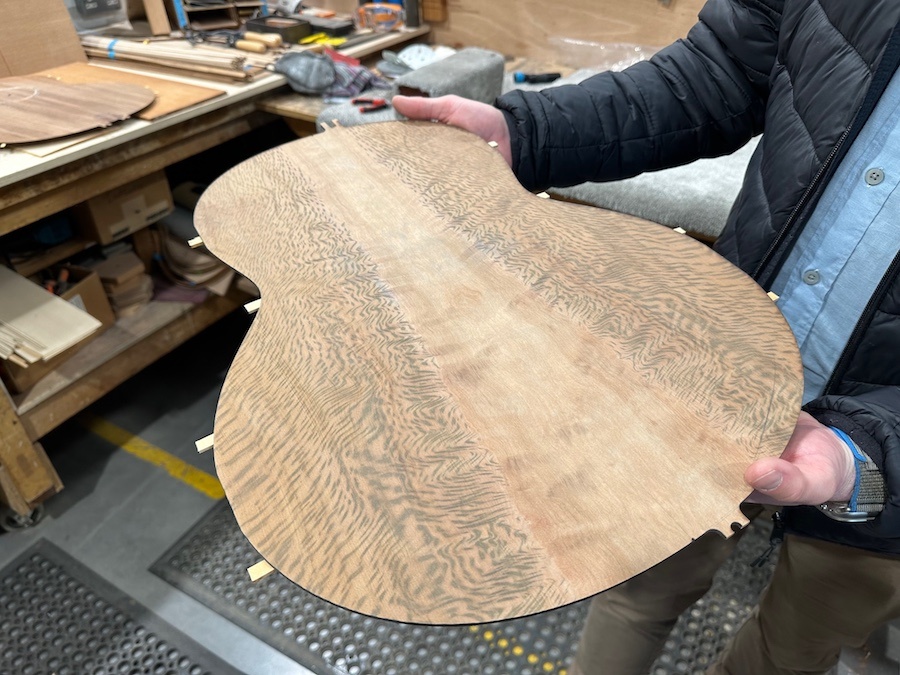
> Your reputation for using only the finest woods in your premium guitars is widely recognized. Could you elaborate on your approach to wood selection and confirm the accuracy of this reputation?
Indeed, our commitment to sourcing top-quality woods is a cornerstone of our craftsmanship. While I cannot comment on other guitar makers or companies, I can attest to the rigorous process we employ. For instance, in the past, I personally traveled to regions like Switzerland and northern Italy to hand-select Alpine spruce tops. It wasn't uncommon for me to sift through hundreds of pieces, ultimately choosing only a select few that met our stringent standards.
Although it's impractical to individually vet every piece for all 1,200 guitars we produce annually, we uphold this meticulous approach for our Master Series and 50 Series guitars. Ensuring the quality of the wood is paramount to achieving the excellence we strive for in each instrument.
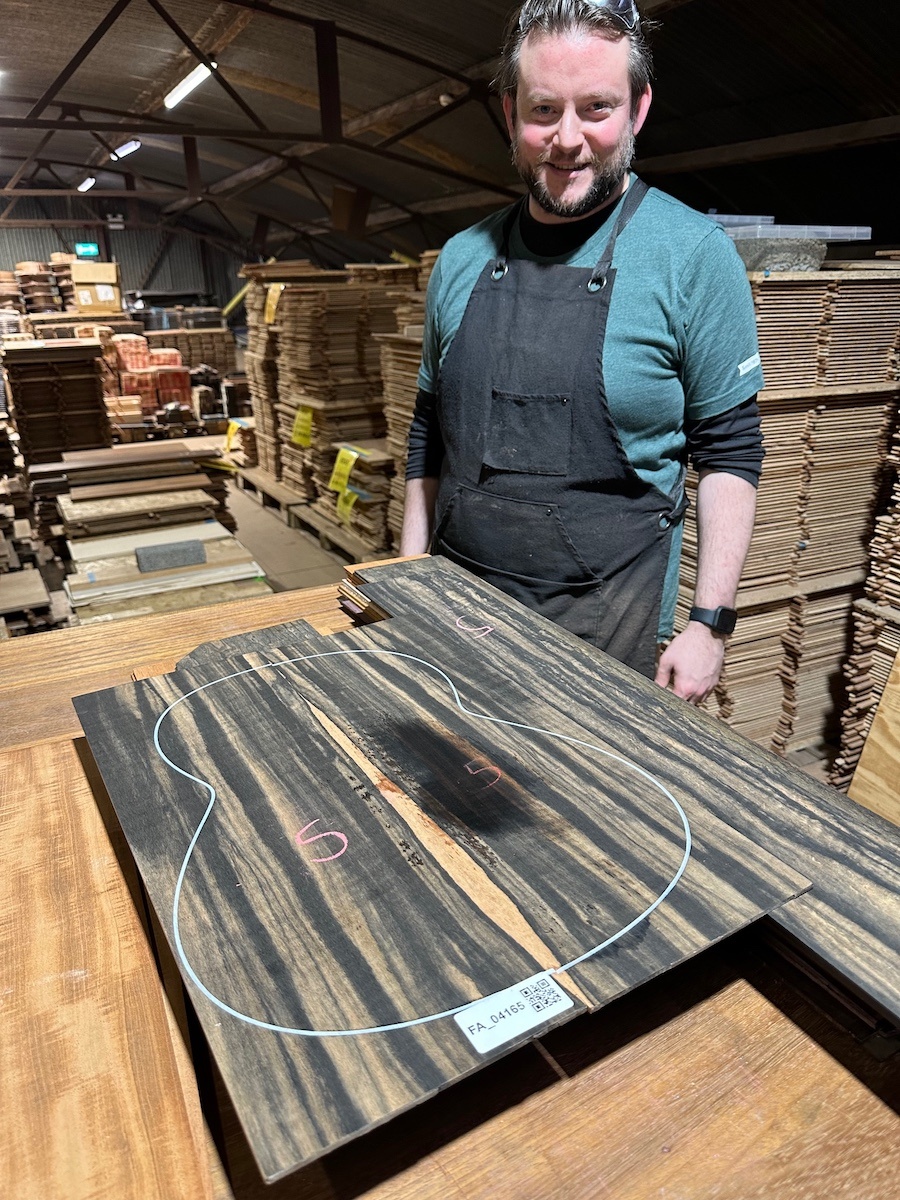
> Your guitars are renowned for their open resonance tone, distinct from the compressed sound associated with some other brands. Could you shed light on how you achieve this unique quality in your instruments?
Absolutely. Crafting guitars, much like designing cars, involves a myriad of interconnected factors that contribute to the final product's quality. For me, achieving that open resonance tone hinges on harmonizing various design elements to optimize the guitar's ability to breathe, respond, and vibrate. It's about striking the right balance in weight, mass, and overall instrument equilibrium.
While volume is important, it's not the sole indicator of a guitar's excellence. A loud yet brash tone is undesirable. Hence, I focus on crafting guitars with warm, rich, and evenly balanced tones. This involves meticulous attention to detail, such as selectively adjusting the bracing on the soundboard to enhance volume without compromising tonal integrity.
However, it's crucial to avoid overzealous adjustments that may lead to uneven frequency response or imbalanced tonality. Thus, my approach entails pushing the design boundaries while maintaining a delicate equilibrium. It's about pushing the limits and then exercising restraint to ensure optimal sonic performance.
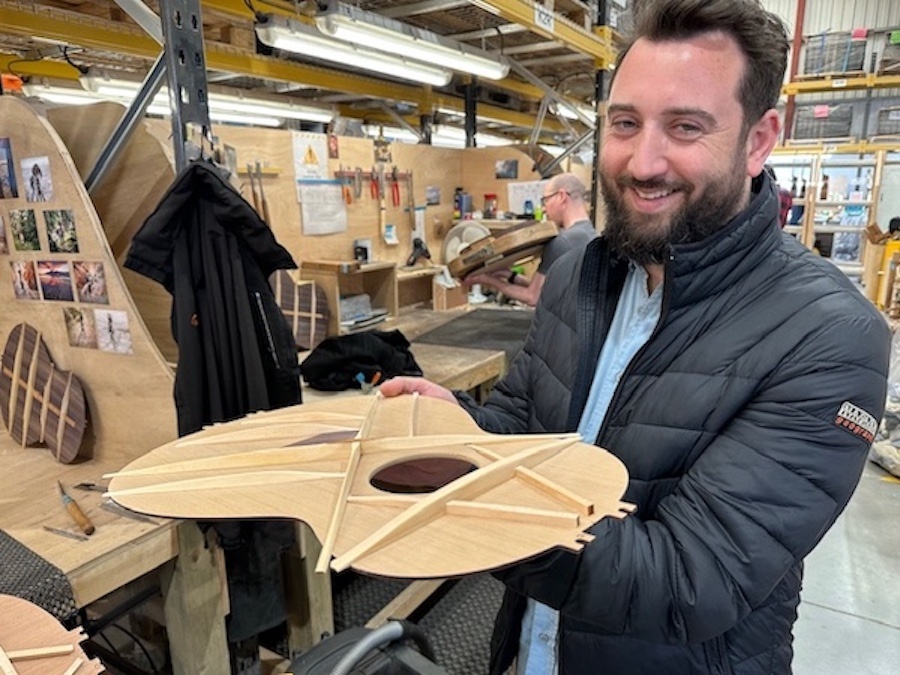
> Your range of guitar models is quite extensive, spanning from the O-size, F-size, S-size, to the wee-size, offering models from 22 or 23 to 50, including masterpieces crafted from superb woods, cutaways, and more. Do you have a favorite among them?
Well, my favorite tends to evolve over time. In the early stages of my career, around 1978, the O-25, formerly known as the L25, held a special place in my heart. Its timeless design has remained unchanged since its inception. Another standout for me was the very first S model I crafted, a Walnut Cedar piece made for Nick Webb from Acoustic Alchemy. I vividly recall the moment I strummed it for the first time in 1991—it was an unforgettable experience that left me with goosebumps. Despite my attachment, Nick was eager to have it for his recordings, so I reluctantly parted with it.
Indeed, the S models hold a particular allure for me. Today, equivalents like the S23 or S35 Walnut Cedar continue to captivate with their exquisite tonal qualities. Another noteworthy mention is the S35 Koa Alpine, which garnered praise from renowned musicians. As for wood preference, while I generally favor Adirondack over Sitka for its distinctive tonal characteristics, sourcing high-quality Adirondack has become increasingly challenging. However, it remains a wood of exceptional quality, contributing to the unique three-dimensional tone of select models, such as those featuring Adirondack struts.
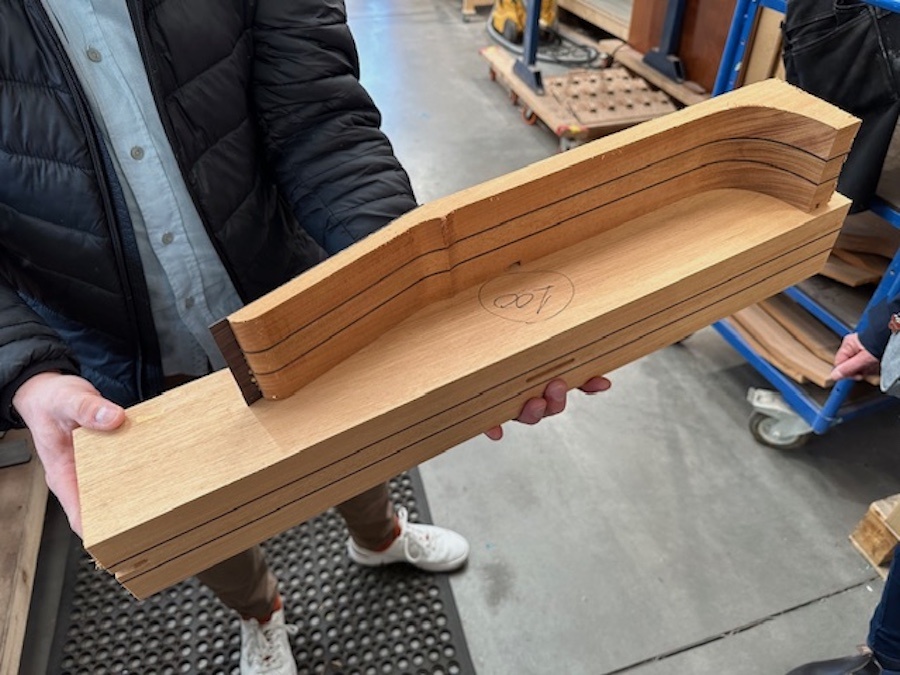
> You're known for offering fan-fret models, a unique feature not commonly found among other manufacturers. Could you shed light on why you chose to incorporate this feature, and what challenges, if any, are involved in producing them? Additionally, how do fan-fret models perform in terms of sales?
The decision to offer fan-fret models stemmed from a combination of curiosity and practicality. Initially, I was skeptical about their playability, fearing confusion regarding finger placement. However, upon trying it myself, I found the experience surprisingly intuitive, dispelling my initial concerns.
The concept behind fan-frets aligns with my belief that longer scale lengths on the bass side encourage resonance, while shorter scale lengths on the treble side facilitate ease of play. This approach mirrors the difference between a grand piano and an upright piano, where each design serves a specific purpose.
Interestingly, when customers first encounter fan-fret guitars, there's often apprehension about their playability. However, upon picking one up and playing, they quickly realize that the difference is negligible and often express admiration for the unique feel and sound. This positive feedback underscores the appeal of fan-fret models, despite initial reservations.
In terms of sales performance, fan-fret models have garnered interest and appreciation from customers, with many embracing their distinctiveness once they experience them firsthand.
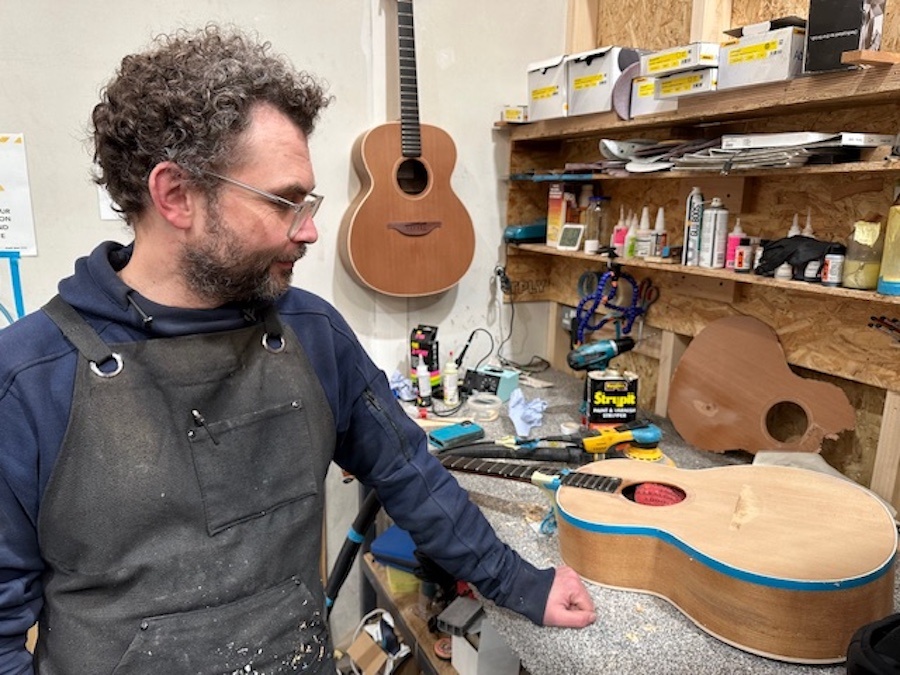
> Your recent introduction of the electric series has sparked curiosity. How have sales been for these guitars, and what sets the production process apart from your traditional acoustic instruments?
Indeed, delving into electric guitar production marks a departure from our accustomed acoustic craftsmanship. The key lies in achieving the right balance and design to ensure the instrument feels comfortable and familiar to the player. Unlike acoustic guitars, where the focus is on optimizing resonance, electric guitars prioritize solid body or semi-solid construction and tonal characteristics.
Manufacturing electric guitars is notably easier and more predictable compared to acoustics. The absence of acoustic complexities streamlines the process, allowing for smoother production. However, the crux lies in fine-tuning the design nuances to meet the preferences and expectations of players. Gathering feedback and collaborating with musicians help refine the instruments, ensuring they resonate with the target audience.
Moreover, the choice of pickups plays a crucial role in shaping the guitar's sound. Opting for high-quality pickups, such as those we use from reputable brands, enhances the overall sonic experience. Ultimately, achieving the right balance of design, construction, and components is paramount in crafting electric guitars that stand out in both performance and appeal.
